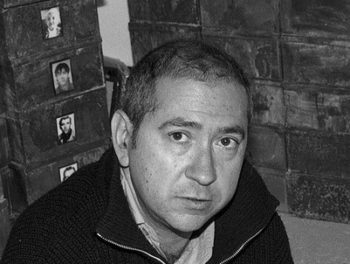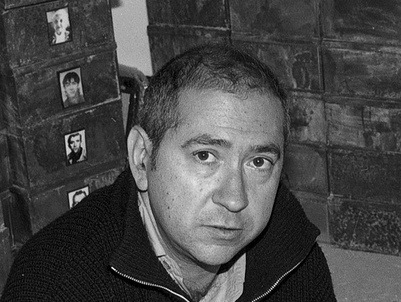[ad_1]

Boltanski in 1990, before he was surveilled at every moment in his studio.
BRACHA L. ETTINGER/WIKIMEDIA
Museums
In an op-ed in the New York Times, Olga Viso, the former director of the Walker Art Center in Minneapolis, writes that “exponential gaps remain between the growing minority-majority American population and those who lead, support, attend or are employed by art museums.” And she argues, “If museums want to continue to have a place, they must stop seeing activists as antagonists. They must position themselves as learning communities, not impenetrable centers of self-validating authority.” [The New York Times]
Artists
Christian Boltanski, who has retrospectives coming up at the Israel Museum in Jerusalem, the National Art Center in Tokyo, and the Pompidou Centre in Paris, discussed his work with Emilie Bickerton. Fun fact: “Tasmanian gambler and businessman David Walsh . . . pays Boltanski a monthly fee of around $2,500 to film him in his studio 24/7,” a project that will continue “until the end of the artist’s life.” [Apollo]
Markets
David Zwirner now exclusively represents the Joan Mitchell Foundation, which had previously worked with Cheim & Read. [ARTnews]
Asked about the proposal that Zwirner recently floated about big blue-chip galleries paying more for art fair booths to subsidize smaller galleries, dealers behind those more modest operations are receptive but skeptical. Stefan Benchoam of Guatemala City’s Proyectos Ultravioleta is in favor of the idea, but said, “We mustn’t fool ourselves: we live in a neoliberal world and work in a hyper-capitalist industry, and things won’t actually change until the major powers truly understand and see actual value in changing the system from within.” [The Art Newspaper]
Scott Reyburn visited Gallery Weekend in Berlin and reports that, while many art buyers these days favor fairs over gallery visits, the city’s “physical spaces continue to be a draw for discerning collectors.” Rents are rising, but “Berlin is still cheap compared to Paris and London,” Jonas Burgert, a Berlin artist, said. “There’s still a lot of good art in this city.” [The New York Times]
Buildings
The Menil Drawing Institute in Houston, whose opening was delayed last year, will now open to the public in November. [The Architect’s Newspaper]
The Talent
Collector Daniel Loeb is stepping down as chairman of Success Academy Charter Schools after five years and leaves “a legacy of aggressive school growth and high test scores, but also controversy over his tendency to vilify opponents in racially tinged terms,” Sharon Otterman writes. [The New York Times]
Natasha Hoare has been hired as curator of Goldsmiths Center for Contemporary Art, the new gallery at Goldsmiths, University of London, which is slated to open in September. She joins from Witte de With Center for Contemporary Art in Rotterdam, where she held the same position. [Artforum]
Here’s a profile of Jennifer Price, the curator of Asian and non-Western art at the Kimbell Art Museum in Fort Worth. [Dallas Observer]
Television
The next season of Art21’s TV show on PBS, Art in the Twenty-First Century, will focus on Berlin, Johannesburg, and San Francisco. [ARTnews]
And More
Here are some photos of Jonathan Lyndon Chase’s current show at Company in New York. [Art Viewer]
And here are photos of Marina Pinsky’s show at Sydney in Sydney. [Contemporary Art Daily]
[ad_2]
Source link

